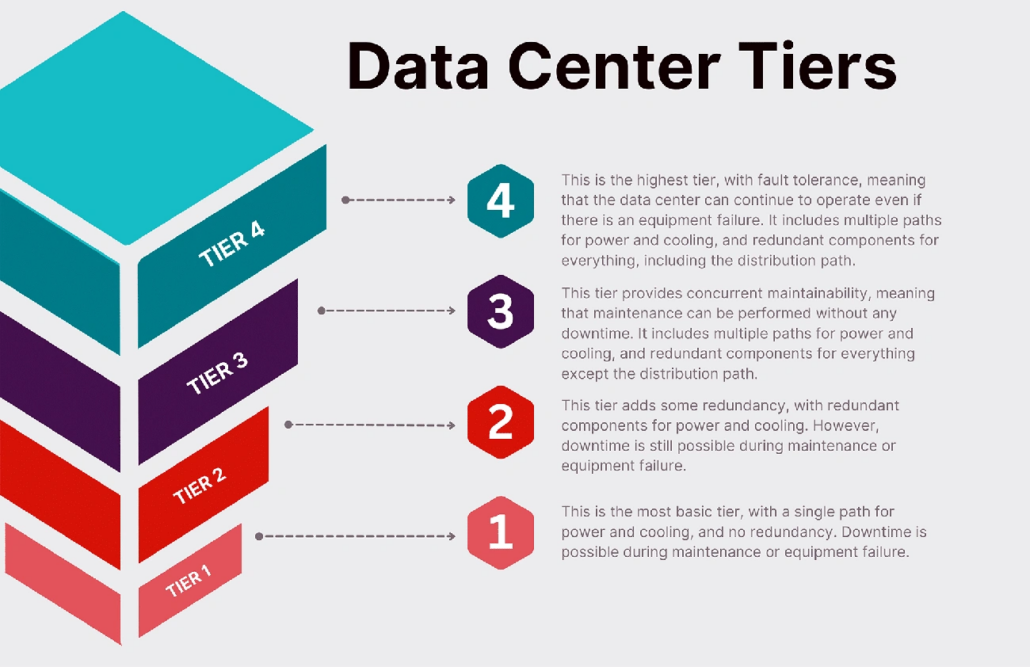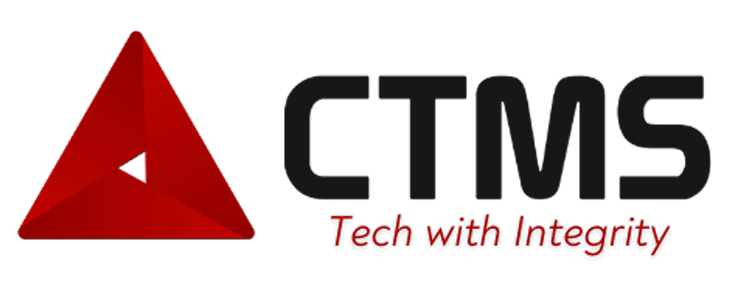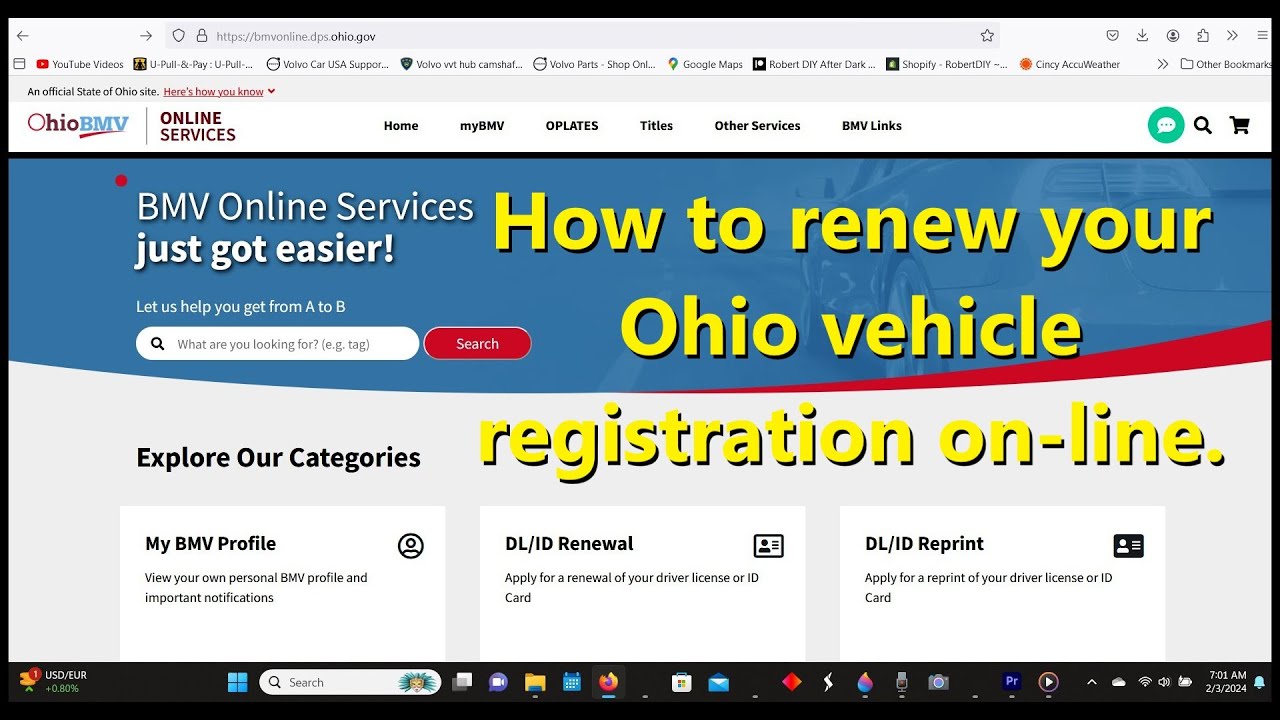Cloud Computing Hosting: The Most Important Insights for CTOs in 2025

Cloud computing hosting has changed the way enterprises work in 2025. Major providers now reach every corner of the globe. AWS runs 36 geographic regions with 114 availability zones. Microsoft Azure manages about 300 data centers in more than 60 locations worldwide. Google Cloud Platform has grown to 40 regions with 121 zones, building a truly global ecosystem. With the rise of cloud computing hosting, businesses can now leverage more efficient and reliable infrastructures through cloud computing hosting.
Enterprise CTOs are moving to these strong cloud environments for good reasons. Downtime hurts operations, shakes customer trust, and cuts into revenue. The world’s top cloud hosting companies put more money into security than most businesses can afford. They also let companies adjust their resources based on what they need.
With cloud computing hosting, businesses can leverage scalable resources tailored to their specific needs, ensuring optimal performance and cost efficiency.
The success stories of companies like Netflix and Coca-Cola highlight the transformative power of cloud computing hosting in modern enterprises.
These cloud computing hosting solutions enable businesses to maintain their competitive edge through enhanced operational efficiency.
By adopting cloud computing hosting, enterprises can adapt to market changes swiftly, ensuring they remain relevant and efficient.
The shift to cloud computing hosting allows enterprises to adapt quickly to market demands, ensuring they remain competitive in a rapidly changing environment.
The shift towards cloud computing hosting reflects a broader trend of digital transformation across various industries.
Cloud computing hosting offers businesses the agility to scale resources on demand, aligning IT capabilities with business growth.
Furthermore, cloud computing hosting empowers companies with advanced data analytics tools, enabling better decision-making and operational insights.
Such efficiencies can only be achieved with the right approach to cloud computing hosting, tailored to meet specific business challenges.
Utilizing cloud computing hosting solutions not only enhances performance but also drives innovation across various sectors.
Choosing the right cloud computing hosting provider is crucial for maximizing these benefits.
Multi-cloud strategies enhance the effectiveness of cloud computing hosting by allowing businesses to leverage the best of different providers.
The integration of cloud computing hosting with existing IT infrastructure can greatly enhance productivity.
As the demand for cloud computing hosting increases, organizations are finding new ways to optimize their workflows and capabilities.
Through cloud computing hosting, businesses can harness the power of AI and machine learning to enhance customer experiences.
Cloud computing hosting is essential for modern enterprise applications, providing the backbone for services like real-time data processing and analytics.
Adopting cloud computing hosting allows enterprises to focus on innovation rather than infrastructure management.
With cloud computing hosting, organizations can leverage best practices in data management and compliance.
Transitioning to cloud computing hosting not only optimizes operations but also ensures a sustainable IT strategy.
As organizations embrace cloud computing hosting, they can reduce their carbon footprint through energy-efficient solutions.
Cloud computing hosting facilitates collaboration among teams by providing remote access to essential resources.
The comprehensive nature of cloud computing hosting allows businesses to focus on their core competencies while IT takes care of infrastructure.
For sensitive data, cloud computing hosting provides not just secure options but also the flexibility required for modern business needs.
Utilizing cloud computing hosting can significantly improve an organization’s responsiveness to market changes.
As businesses transition to cloud computing hosting, they can expect enhanced reliability and reduced latency in services.
Cloud computing hosting allows organizations to experiment with new technologies without large investments in hardware.
Companies can leverage cloud computing hosting to ensure their IT operations are aligned with business objectives.
As companies navigate their digital transformation, cloud computing hosting has become indispensable, allowing for seamless scalability and flexibility in operations.
Adopting cloud computing hosting means embracing a future where agility and speed are paramount.
Utilizing cloud computing hosting ensures seamless collaboration among teams, driving innovation.
Compliance with regulations is simplified with cloud computing hosting, ensuring businesses meet necessary standards.
Organizations can achieve faster time-to-market for their products and services through cloud computing hosting.
The flexibility of cloud computing hosting allows companies to scale their operations according to demand.
Multi-cloud strategies are often supported by cloud computing hosting, allowing businesses to diversify their providers while enhancing performance.
Leveraging cloud computing hosting is now a critical strategy for organizations aiming to enhance their competitive advantage in the digital marketplace.
The scalable nature of cloud computing hosting supports business growth without the need for extensive hardware investments.
Moreover, businesses adopting cloud computing hosting solutions often experience improved performance and reduced operational costs.
Cloud computing hosting enables businesses to remain agile in an ever-changing market landscape.
With effective resource management in cloud computing hosting, businesses can minimize costs while maximizing performance.
As evident from Netflix’s success, the strategic use of cloud computing hosting can significantly elevate service delivery.
Netflix shows what enterprise cloud hosting can do. They moved their streaming service to AWS to handle huge viewer spikes during prime time. Coca-Cola took its IT to the cloud and cut operating costs by 40%. These stories show why cloud computing providers have become key partners for businesses that want to stay ahead.
SSDs used in cloud computing hosting offer significant performance advantages over traditional storage methods.
Choosing the right cloud computing hosting solution can significantly impact a company’s operational capabilities.
The best enterprise cloud providers run backup data centers in multiple regions to keep things reliable. AWS promises “11 9’s” of durability for S3 storage, setting the bar high for others to match. DigitalOcean stands out by keeping things simple and developer-friendly, showing the many choices businesses have today.
Cloud computing hosting platforms are increasingly incorporating AI and machine learning to provide more personalized experiences.
Embracing cloud-native architectures through cloud computing hosting enables faster deployment and innovation.
Optimizing workloads in cloud computing hosting leads to enhanced productivity and reduced downtime.
Investing in cloud computing hosting solutions enhances organizational efficiency and reduces operational complexities.
Cloud computing hosting serves as a foundation for businesses looking to leverage emerging technologies for future growth.
Real-time monitoring systems in cloud computing hosting can identify and address issues before they escalate.
With cloud computing hosting, enterprises gain access to a rich ecosystem of services that can drive innovation and efficiency.
This piece will get into what enterprise CTOs might not tell you about cloud computing hosting in 2025. You’ll learn how these platforms can improve your business operations while tackling common challenges and clearing up misconceptions.
Enterprise Cloud Hosting in 2025: What’s Changed
With cloud computing hosting, companies can ensure business continuity and disaster recovery with high reliability.
Transitioning to cloud computing hosting not only saves costs but also optimizes resource utilization.
Enterprise cloud hosting has changed the digital world for businesses since the early 2020s. Organizations in a variety of industries are moving away from the traditional “lift and shift” approach to adopt sophisticated cloud strategies in 2025.
The widespread adoption of cloud computing hosting underlines its importance in modern enterprise strategy.
For sensitive data, cloud computing hosting provides secure options, ensuring compliance and protection.
Utilizing cloud computing hosting can dramatically enhance business agility and responsiveness.
Change from Traditional Hosting to Cloud-first Models
Companies have rapidly moved from traditional on-premises hosting to cloud-first models. Recent industry analysis shows that 82% of workloads now operate in the cloud, compared to just 58% in 2021. Many organizations now spend over 70% of their IT budgets on cloud infrastructure, which marks a complete flip from the on-premises-dominant model of the previous decade.
My work with clients across multiple sectors has shown this transformation firsthand. The financial benefits have become too good to ignore: cloud computing hosting cuts capital costs while offering unmatched flexibility. Companies can deploy applications in minutes instead of months and gain a competitive edge through faster innovation cycles.
Companies needed massive hardware investments, physical space, cooling systems, and dedicated IT staff with traditional hosting. Cloud hosting lets businesses skip these upfront costs and pay only for what they use.
Hybrid and Multi-Cloud Adoption Trends
Companies no longer put all their eggs in one basket. Our industry research reveals that 77% of enterprises use multiple cloud providers at once. This multi-cloud strategy shows major progress from relying on a single provider.
Organizations with complex needs prefer the hybrid cloud model that combines private and public cloud resources. This setup helps businesses keep sensitive workloads on private infrastructure while using public cloud resources for less critical operations.
Multi-cloud strategies offer several vital benefits:
- Risk mitigation through reduced vendor dependency
- Cost optimization by selecting the most economical provider for specific workloads
- Geographical flexibility to meet regional compliance requirements
- Best-of-breed services from different providers
Why CTOs Are Prioritizing Cloud-native Architectures
Cloud-native architectures have become essential in enterprise environments. CTOs are rebuilding applications using cloud-native principles rather than just moving them to the cloud.
65% of enterprises now use containerized applications with microservices architecture to improve scalability and resilience. Kubernetes leads the pack as the standard orchestration platform that manages these containers in a variety of cloud environments.
Many organizations first saw cloud migration as a simple infrastructure change. The most successful enterprises now treat it as a complete architectural transformation. Cloud-native applications built with serverless computing components scale automatically to handle varying workloads and deliver steady performance whatever the demand.
CTOs invest heavily in their team’s new skills. Cloud-native approaches need different expertise than traditional IT. Teams must focus on DevOps practices, automation, and continuous deployment pipelines instead of hardware management and manual setups.
The results speak for themselves: cloud-native applications deploy 40-60% faster and show substantially improved resilience against failures compared to traditional monolithic applications.
Key Features That Define Enterprise Cloud Hosting

Image Source: Nlyte
Enterprise-grade cloud hosting distinguishes itself from simple solutions through several key features. Cloud computing platforms have grown beyond simple infrastructure provision. They now offer sophisticated capabilities that handle complex business needs.
End-to-End Encryption and Compliance Standards (GDPR, HIPAA)
A resilient encryption system serves as the foundation of enterprise cloud hosting security. Top-tier cloud computing providers use end-to-end encryption protocols. These protocols protect sensitive information during storage and transmission while meeting regulatory requirements.
Healthcare organizations must comply with HIPAA rules to protect patient data strictly. Breaking these rules can be expensive. Penalties go up to $50,000 per incident with a yearly cap of $1.5 million for similar violations. Cloud hosting services in healthcare must maintain Business Associate Agreements (BAAs) and use specialized security controls.
GDPR requires strict data protection measures too. Companies face penalties up to €20 million or 4% of global turnover. Article 34 offers an interesting benefit – organizations don’t need to report breaches if encryption makes the compromised data unreadable to unauthorized users. This makes encryption valuable for compliance.
Disaster Recovery with Multi-region Redundancy
Multi-region redundancy plays a crucial role in enterprise cloud hosting. Workloads spread across different geographical regions ensure the business continues even during outages.
Most companies use the active/passive approach. The main region handles regular traffic while backup regions stand ready as recovery sites. This setup cuts down Recovery Time Objectives (RTO) and Recovery Point Objectives (RPO) better than old backup methods.
AWS CloudFormation helps deploy infrastructure consistently across regions. Database technologies add more protection. Amazon Aurora global database replicates to backup regions in less than a second. It can promote secondary clusters within a minute during regional failures.
Auto-scaling and Load Balancing for Peak Traffic
Auto-scaling adjusts resources based on traffic changes. This feature brings important benefits:
- Cost efficiency: Resources decrease during quiet periods to save money
- Improved reliability: Extra capacity kicks in when traffic spikes
- Seamless operation: Scaling happens without disrupting service
Horizontal scaling adds or removes instances while apps keep running, unlike vertical scaling which just increases server capacity. This works great for apps with changing workloads or unexpected traffic patterns.
Cloud computing hosting solutions provide ongoing support and updates, ensuring organizations stay competitive.
Load balancers work with auto-scaling to spread incoming traffic across servers. This prevents overload on single resources and keeps performance steady even during big traffic swings.
SSD Storage and CDN Integration for Speed Optimization
SSDs perform much better than traditional storage options. Measurements show median global Time To First Byte (TTFB) reaches 127 milliseconds with SSDs versus 187 milliseconds for other object storage solutions.
Cloud storage works better with Content Delivery Networks (CDNs). This combination puts content closer to users and speeds up load times by up to 90%. Many providers now offer “perma-cache” features that store assets next to CDN infrastructure permanently. This ensures perfect cache hits and eliminates requests to origin servers.
Real-time Monitoring with Predictive Analytics
AI-driven monitoring represents the latest development in enterprise cloud hosting. Machine learning algorithms analyze big datasets to spot patterns, predict issues, and automate responses.
Predictive analytics helps forecast future events using historical data for proactive resource management. These systems can spot upcoming traffic spikes, hardware failures, and network problems before they cause trouble. They also optimize resources by studying usage patterns and making adjustments automatically to prevent bottlenecks and waste.
As businesses evaluate options, cloud computing hosting stands out for its flexibility and scalability.
Advanced platforms provide instant alerts and dashboards that show the environment’s health clearly. This enables proactive management instead of fixing problems after they happen.
Top Cloud Computing Hosting Providers Compared
With cloud computing hosting, enterprises can efficiently manage workloads and optimize performance.
Adopting cloud computing hosting is crucial for enterprises looking to innovate and scale operations.

Enterprises benefit from cloud computing hosting through enhanced collaboration and resource sharing.
Image Source: DEV Community
Integrating cloud computing hosting enhances operational efficiency and reduces time to market.
The latest innovations in cloud computing hosting allow businesses to leverage advanced technologies and services.
With the proper cloud computing hosting, companies can significantly improve their operational resilience.
Cloud computing providers in 2025 will bring unique benefits that serve different enterprise needs. Each platform has grown to excel in specific market segments with specialized technical capabilities.
As digital demands grow, cloud computing hosting emerges as a vital strategic asset for businesses.
Cloud computing hosting not only aids in disaster recovery but also enhances data accessibility for teams.
Amazon Web Services (AWS): 200+ Services and Global Reach
AWS runs the largest cloud infrastructure worldwide with 33 regions and 105 Availability Zones. Their exceptional global presence delivers minimal latency to customers anywhere. AWS provides over 200 feature-rich services that cover compute, storage, databases, analytics, networking, and emerging technologies. This complete ecosystem lets enterprises build any workload without technical constraints. AWS’s commitment to durability, with its famous “11 9’s” for S3 storage, sets reliability standards other providers aim to achieve.
Microsoft Azure: Simplified Microsoft Stack Integration
Azure shines through its native integration with existing Microsoft technologies. Companies that use Microsoft tools get unified identity management through Azure Active Directory. Azure Integration Services help businesses connect their applications and services both on-premises and in the cloud. This creates consistent and flexible workflows. Many Fortune 500 companies value Azure’s support for multiple programming languages, databases, operating systems, and devices.
Google Cloud Platform: BigQuery and AI Capabilities
GCP stands out with advanced data analytics and artificial intelligence tools. BigQuery ML helps users create and run machine learning models with SQL queries instead of complex programming. BigQuery has evolved into an autonomous data-to-AI platform that adds Gemini models for text summarization and sentiment analysis right in the analytics environment. Code assist usage in BigQuery grew 350% over nine months, with a 60% code generation acceptance rate.
As organizations adopt cloud computing hosting, they gain access to advanced technologies that drive innovation.
IBM Cloud: Bare Metal and Industry-specific Solutions
IBM Cloud excels at bare metal servers that deliver dedicated, single-tenancy performance with 10+ years of proven uptime. These servers give complete control without hypervisors – perfect for workloads that need maximum performance. IBM provides powerful configuration options with the latest 4th Gen Intel Xeon or AMD CPUs and Nvidia GPUs. The servers support SAP HANA and SAP NetWeaver workloads, showing IBM’s dedication to enterprise-grade, industry-focused solutions.
DigitalOcean: Developer-friendly and Affordable
DigitalOcean serves developers with a straightforward cloud hosting approach. Their platform features:
- Simple UI and extensive documentation for quick deployment
- Clear pricing with predictable costs
- 99.99% uptime SLA across 14 global data centers
Forrester’s Total Economic Impact study shows organizations using DigitalOcean get benefits worth $2.37 million over three years against costs of $829,000, yielding 186% ROI. This affordability makes DigitalOcean a great fit for startups and growing businesses with basic infrastructure needs.
How to Choose the Right Cloud Hosting for Your Business
Cloud hosting solutions need careful consideration of several key factors. Your business requirements should guide the selection process before you look at what providers offer.
Evaluating Uptime SLAs and Redundancy Options
Uptime guarantees are the lifeblood of cloud hosting reliability. Provider tiers come with different availability percentages:
- 99.9% means about 43.8 minutes of downtime monthly
- 99.99% cuts downtime to roughly 4 minutes monthly
- 100% SLAs exist but come with specific conditions
Notwithstanding that, the compensation structure carries more weight than percentages. Cloud providers often give minimal compensation through service credits instead of cash refunds. AWS gives back just 10% of monthly fees when availability drops below 99.95%. UpCloud takes a different approach by offering 50x the cost of unavailable resources.
Your redundancy options include:
- Locally Redundant Storage (LRS): 99.9% uptime, but stays in one location
- Zone Redundant Storage (ZRS): Data copies across availability zones
- Geo-Redundant Storage (GRS): Cross-regional replication hitting 99.99% uptime
Integration with Existing Tools (e.g., SAP, Salesforce)
Your choice of provider should match your current tools. IBM Cloud stands out by offering bare metal servers certified for SAP HANA and NetWeaver workloads. The right cloud provider naturally connects with your databases and business applications to keep operations running smoothly.
Cost Models: Pay-as-you-go vs Reserved Instances
Understanding the advantages of cloud computing hosting is essential for businesses looking to thrive in 2025.
Multi-cloud approaches in cloud computing hosting not only reduce risks but also enhance operational flexibility.
These features make cloud computing hosting the preferred choice for modern enterprises.
The benefits of cloud computing hosting can significantly influence a company’s bottom line.
Pay-as-you-go pricing brings flexibility without upfront commitments—you pay for what you use. This model suits variable workloads or testing environments perfectly.
Reserved Instances need commitment (usually 1-3 years) but cut costs significantly, up to 72% less than on-demand pricing. A three-year AWS Reserved Instance costs $9,224 compared to $25,228 for equivalent on-demand usage.
Your workload predictability should drive this decision. Stable usage patterns make Reserved Instances attractive, while irregular needs point toward pay-as-you-go.
Security Certifications and Data Residency Requirements
Data residency controls specify your information’s physical location. Google Cloud Security Command Center offers regional data controls that keep data within specified areas. Azure promises not to move customer data outside their chosen geographical boundaries without permission.
Looking to evaluate your cloud hosting needs? Contact CTMS for a FREE Consultation to find the perfect solution for your enterprise.
Migration and Implementation Best Practices
Cloud migration success depends on careful planning and execution. A well-thought-out approach helps you get the most from your new environment with minimal disruption.
Assessing Current Infrastructure and Workloads
Your migration starts with a complete assessment of your technology setup. You need to build a detailed inventory of workloads, dependencies, hardware appliances, and supporting services. This assessment should cover source code locations, deployment methods, network restrictions, and licensing requirements. You must also assess which workloads fit cloud deployment—not every application works well in the cloud.
The assessment should look at your current deployment and operational processes, including artifact generation and runtime configuration injection. A clear picture of these elements helps ensure they work with your chosen cloud platform.
Phased Migration Strategy with Rollback Plans
A step-by-step approach reduces risk better than a single “big bang” migration. This approach lets you:
- Watch each phase closely
- Make adjustments when challenges pop up
- Use resources more effectively
- Learn and improve quickly
A solid preparation plan is vital to success. You should map out the migration scope, decide the order of moving instances or data, and set clear milestones for each phase. Creating detailed rollback plans helps you handle potential failures or unexpected problems during the process.
Post-migration Monitoring and Optimization
Once migration completes, expand your monitoring system to collect performance data that shows how well things work compared to before. Regular checks help spot areas that need tweaking while keeping operations running smoothly. Set up reliable monitoring for system uptime, response times, resource usage, and application error rates.
The right cloud resource allocation becomes key after migration—give each workload exactly what it needs to avoid waste or shortages. You should also think about managing idle resources and using cost allocation tags to track spending better.
Training Internal Teams on Cloud Operations
Your staff needs the right cloud skills through various training options:
- Public resources: Hands-on labs and webinars
- In-depth courses: On-demand training or classroom instruction
- Role-based learning paths: Custom-fit to specific job functions
Creating organizational change management plans early helps teams embrace and use new tools effectively.
Want expert help with your cloud migration? Contact CTMS for a FREE Consultation to make your move to the cloud smooth and successful.
Ultimately, the transition to cloud computing hosting is not just a technical shift; it represents a cultural change within organizations.
Conclusion
Cloud Computing Hosting: The Path Forward for Enterprise Success
This piece explores how cloud computing hosting revolutionizes enterprise operations in 2025. The digital world has changed from basic infrastructure outsourcing to complex ecosystems that optimize business innovation.
The change to cloud-first models stands as the most important transformation. About 82% of workloads now run in cloud environments. This basic change brings major benefits: lower costs, faster deployment, and flexibility like never before. Cloud strategies that mix hybrid and multi-cloud approaches help companies reduce risks and optimize costs. Companies can also access the best services from different providers.
The key features that make enterprise-grade cloud hosting stand out are:
- End-to-end encryption with regulatory compliance
- Multi-region redundancy to recover from disasters
- Auto-scaling features that adjust as needs change
- SSD storage with CDN integration to optimize performance
- AI-powered monitoring with predictive analytics
Leading providers like AWS, Azure, Google Cloud, IBM, and DigitalOcean offer different options that match specific business needs. Each brings its strengths – AWS has a detailed service catalog, Azure works well with Microsoft products, and Google excels in AI capabilities.
You need to look at uptime guarantees, integration options, cost models, and security certifications to pick the right provider. Companies should match these factors to their business goals instead of following general advice.
Moving to the cloud needs careful planning. Start with a full assessment and move through stages with reliable backup plans. Keep watching and improving after the move to get the most value from your cloud investment.
Cloud computing brings amazing benefits, but success comes from smart implementation rather than just technology. Companies that think carefully about cloud adoption – with clear goals, good planning, and proper training – gain big competitive advantages.
With cloud computing hosting, businesses can enhance collaboration, streamline operations, and drive better results.
It’s clear that cloud computing hosting will continue to shape the future of enterprise operations and strategy.
Expert help can turn frustration into success for businesses starting their cloud trip. As cloud technologies grow, working with knowledgeable providers becomes more valuable. This helps maximize returns and minimize risks.
Ready to revolutionize your business with the right cloud hosting solution? Schedule your FREE consultation with CTMS today and learn how our expertise can guide your organization toward cloud success.
FAQs
Q1. What are the key advantages of enterprise cloud hosting in 2025? Enterprise cloud hosting offers significant cost reduction, improved scalability, enhanced security measures, and faster deployment of applications. It also provides access to advanced technologies like AI-driven monitoring and predictive analytics, which can optimize resource allocation and prevent issues before they impact operations.
Q2. How does multi-cloud adoption benefit businesses? Multi-cloud strategies provide several advantages, including risk mitigation through reduced vendor dependency, cost optimization by selecting the most economical provider for specific workloads, geographical flexibility to meet regional compliance requirements, and access to best-of-breed services from different providers.
Q3. What should companies consider when choosing a cloud hosting provider? When selecting a cloud hosting provider, companies should evaluate uptime SLAs and redundancy options, integration capabilities with existing tools, cost models (pay-as-you-go vs. reserved instances), security certifications, and data residency requirements. It’s crucial to align these factors with specific business objectives.
Q4. How can organizations ensure a smooth migration to cloud hosting? A successful migration requires a thorough assessment of current infrastructure and workloads, implementation of a phased migration strategy with rollback plans, post-migration monitoring and optimization, and comprehensive training for internal teams on cloud operations. This approach minimizes risks and maximizes the benefits of the new environment.
Q5. What are some key features of enterprise-grade cloud hosting? Enterprise-grade cloud hosting typically includes end-to-end encryption with compliance standards (like GDPR and HIPAA), disaster recovery with multi-region redundancy, auto-scaling and load balancing for peak traffic, SSD storage with CDN integration for speed optimization, and real-time monitoring with predictive analytics.
As we explore the future, cloud computing hosting will continue to drive enterprise innovation and efficiency.
In an era of unprecedented change, organizations leveraging cloud computing hosting will be better positioned to adapt and thrive.
Ultimately, the strategic implementation of cloud computing hosting is essential for businesses aiming for long-term success.
With the right approach, cloud computing hosting can transform operations and enhance overall productivity.






